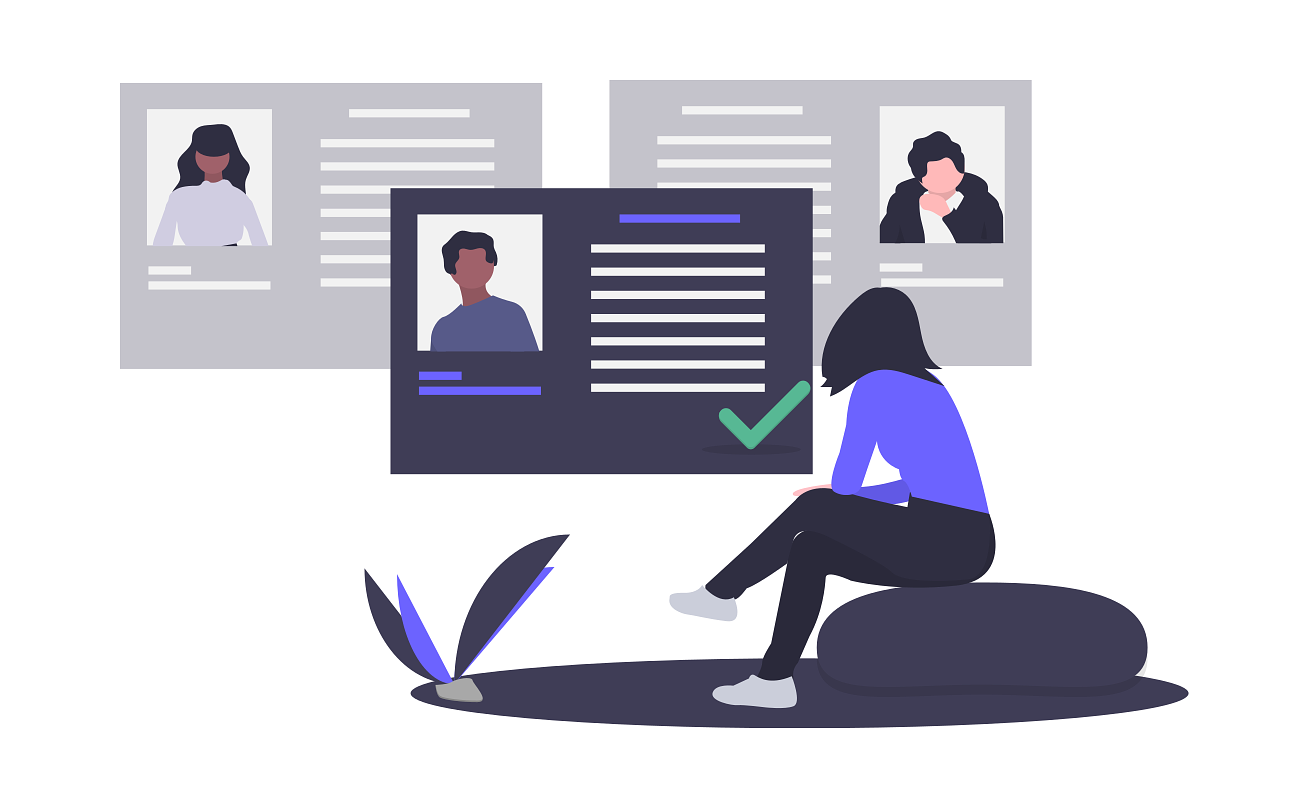10+ Tips to Hire the Right Fit Using Video Interview Platform
5 Minutes read

The use of video interview platforms has become increasingly popular in the hiring process, especially in the age of remote work and virtual interactions.
These platforms offer a convenient way to assess candidates' skills, qualifications, and cultural fit without the need for in-person meetings.
Some platforms like HyreSnap Interview as a Service offer an additional facility of tech experts to conduct interviews on your behalf to hire the best talent.
To make the most of video interviews and ensure you hire the right fit for your organization, consider these 10+ tips.
Whether virtual interviews are more effective than physical interviews depends on various factors, including the specific context, the nature of the job, and the preferences of the interviewer and interviewee.
Both virtual and physical interviews have their advantages and disadvantages, and their effectiveness can vary from one situation to another. Here are some considerations for each:
Advantages of Virtual Interviews:
- Accessibility: Virtual interviews make it easier to connect with candidates or interviewers regardless of their geographic location. This can expand the pool of potential candidates and reduce the need for travel.
- Cost-Effective: Virtual interviews eliminate travel costs, making them more cost-effective, especially for long-distance or international interviews.
- Scheduling Flexibility: Virtual interviews often provide more flexibility in scheduling, as they don't require coordinating physical meetings or finding available meeting spaces.
- Recording and Review: Virtual interviews can be recorded, allowing interviewers to review the interviews later, share them with colleagues, or revisit candidate responses.
- Reduced Bias: Some research suggests that virtual interviews can reduce bias related to physical appearance, gender, or age, allowing candidates to be evaluated primarily on their qualifications and responses.
- Convenience: Virtual interviews can be more convenient for candidates, as they can participate from the comfort of their own location, potentially reducing stress associated with in-person interviews.
Advantages of Physical Interviews:
- In-Person Connection: Physical interviews can establish a more personal and direct connection between the interviewer and the candidate, allowing for better rapport building and assessment of non-verbal cues.
- Environment Assessment: In physical interviews, employers can assess the candidate's professionalism and fit within the physical workplace environment.
- Hands-On Assessment: For certain roles, physical interviews may involve hands-on tasks or assessments that are challenging to replicate virtually (e.g., technical skills assessments, equipment operation).
- Immediate Clarifications: In a physical setting, interviewers and candidates can immediately clarify questions or address misunderstandings, potentially leading to more in-depth discussions.
- Professionalism: Some organizations may view physical interviews as a sign of commitment and professionalism, which can positively influence candidate perceptions.
Hiring the right fit through virtual interviews requires a strategic approach to ensure that candidates are assessed accurately despite the remote setting. Here are 10+ tips to help you make successful virtual hires:
- Define Clear Job Requirements: Before conducting virtual interviews, ensure that you have well-defined job requirements, including skills, qualifications, and behavioral traits you're looking for in a candidate. This will help you screen candidates effectively.
- Use Structured Interviews: Develop a standardized set of questions and evaluation criteria for all candidates. Structured interviews help ensure consistency and fairness in the assessment process.
- Test Technical Setup: Before the interview, check your video conferencing software, internet connection, camera, and microphone to ensure they are working correctly. This helps avoid technical glitches during the interview.
- Create a Professional Background: Select a clean and well-lit environment for the interview. Ensure your background is free from distractions and conveys professionalism.
- Establish Clear Communication: At the start of the interview, explain the interview process, set expectations, and provide an overview of the company and job role.
- Assess Soft Skills: Pay close attention to soft skills such as communication, problem-solving, adaptability, and teamwork. Use situational or behavioral questions to assess these skills.
- Probe for Cultural Fit: Ask questions that help determine if the candidate aligns with your company culture and values. Share information about your culture and listen for alignment in the candidate's responses.
- Evaluate Technical Competence: For technical roles, include technical assessments or coding challenges to evaluate the candidate's skills. Use screen sharing and code collaboration tools when appropriate.
- Use Video to Gauge Non-Verbal Cues: Video interviews allow you to assess candidates' body language and facial expressions. Pay attention to their engagement and communication style.
- Record the Interview: With the candidate's permission, record the interview for review and comparison with other candidates. This can be useful for collaborative decision-making.
- Assess Remote Work Competence: If the role is remote or involves remote work, ask questions about the candidate's experience with remote work, their home office setup, and their ability to manage remote work challenges.
- Evaluate Problem-Solving Skills: Present real-world scenarios or challenges relevant to the job and ask candidates to discuss how they would approach and solve them. Assess their problem-solving and critical thinking abilities.
Choosing the best video interview platform is essential to ensuring a smooth and effective hiring process, especially in a remote or virtual environment.
Here's a step-by-step guide to help you make an informed decision when selecting a video interview platform:
Begin by understanding your organization's specific needs and requirements. Consider factors such as the type of roles you're hiring for, the number of interviews you conduct, and any unique features or integrations you may need.
Determine the types of video interviews you plan to conduct, such as live (synchronous) interviews, pre-recorded (asynchronous) interviews, or a combination of both.
Make a list of essential features and capabilities you require. Common features include video recording, screen sharing, integration with applicant tracking systems (ATS), interview scheduling, and customizable branding.
Consider the platform's user-friendliness for both interviewers and candidates. An intuitive interface reduces the learning curve and minimizes technical difficulties.
Check if the platform integrates seamlessly with your existing HR software, ATS, or other tools you use in your recruitment process. Integration can save time and streamline your workflow.
Look for platforms that allow you to customize the interview experience with your branding, logos, and company-specific questions or prompts.
Ensure the platform complies with security and privacy regulations, especially if you handle sensitive candidate information. Features like data encryption and secure storage are important.
Verify the technical requirements for both interviewers and candidates. The platform should be accessible on various devices and browsers, without requiring complex installations.
Consider the candidate experience. A user-friendly platform that provides clear instructions can enhance candidates' comfort and engagement during interviews.
Choose a platform that can scale with your hiring needs, whether you're a small organization or a large enterprise.
Assess the level of customer support and training offered by the platform provider. Prompt and helpful support can resolve issues quickly.
Evaluate the pricing structure of the platform. Some charge per user, while others offer tiered pricing based on usage. Ensure that the platform's cost aligns with your budget.
Whenever possible, opt for platforms that offer a trial period or a demo. This allows you to test the platform's functionality and suitability for your needs before committing.
Read user reviews and seek references from other organizations that have used the platform. Their experiences can provide valuable insights.
Verify that the platform complies with accessibility standards (e.g., WCAG) to ensure that all candidates, including those with disabilities, can participate in interviews.
Research the platform's uptime record and reliability. Downtime during interviews can disrupt your hiring process.
Assess the platform's ability to provide analytics and reporting features. Insights into candidate engagement and interview performance can be valuable for decision-making.
Consider the platform's ability to adapt to future technological advancements and industry trends.
Ensure that the platform complies with relevant legal and regulatory requirements, such as data protection and privacy laws.
After implementing the platform, regularly gather feedback from interviewers, candidates, and administrators to assess its effectiveness and address any issues.
You can opt for any video intervie platform to conduct virtual interviews for your company. However, assuming that you do not have an expertise in conducting virtual interviews, we recommend using HyreSnap Interview as a Service platform.
It is an interview outsourcing platform powered by AI technology and a team of 500+ tech experts who conduct analytical tech interviews for companies.
Below are some features offered by this modern virtual interview platform:
You can follow the above given tips and guidelines to hire the right fit for your company using a video interview platform. For additional virtual interview assistance, please contact out career experts at info@hyresnap.com. We will offer you personalized interview solutions for your company.



